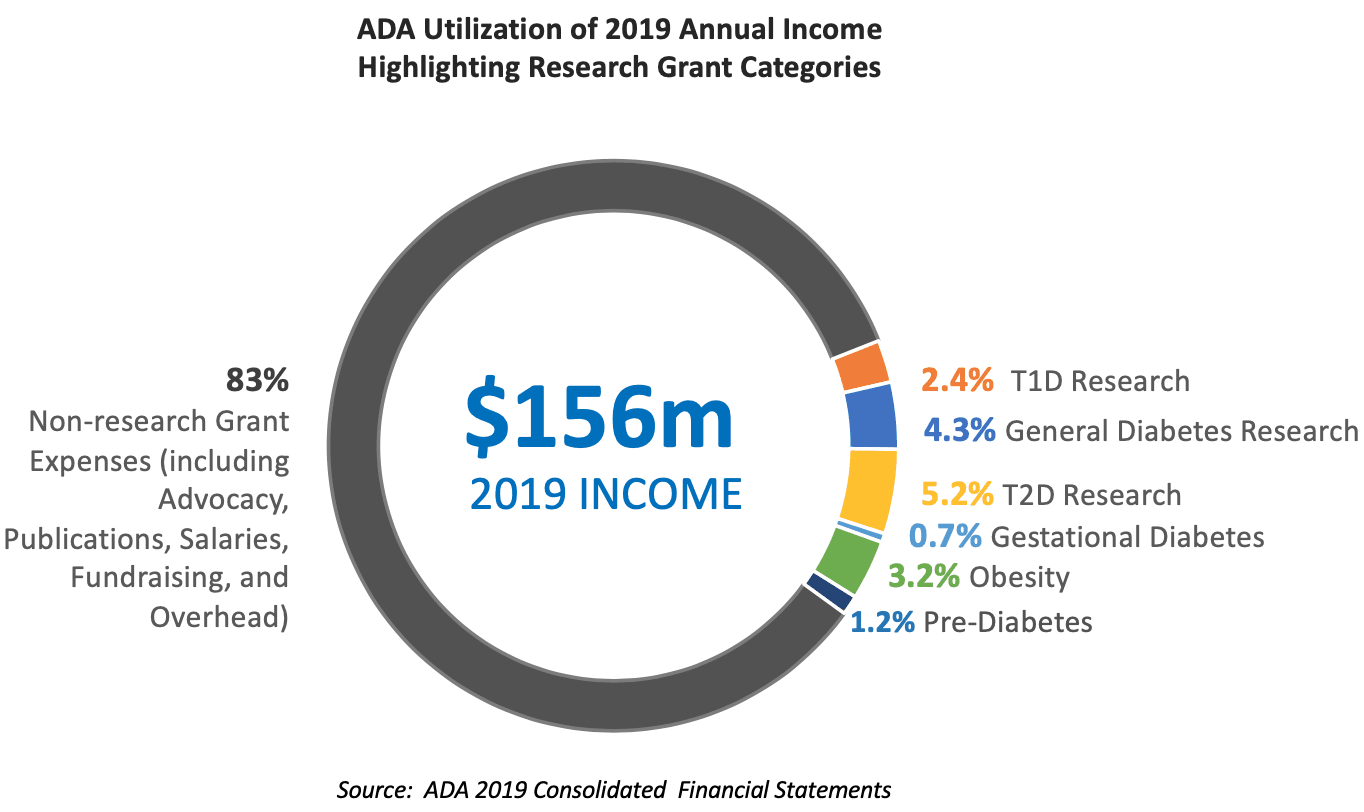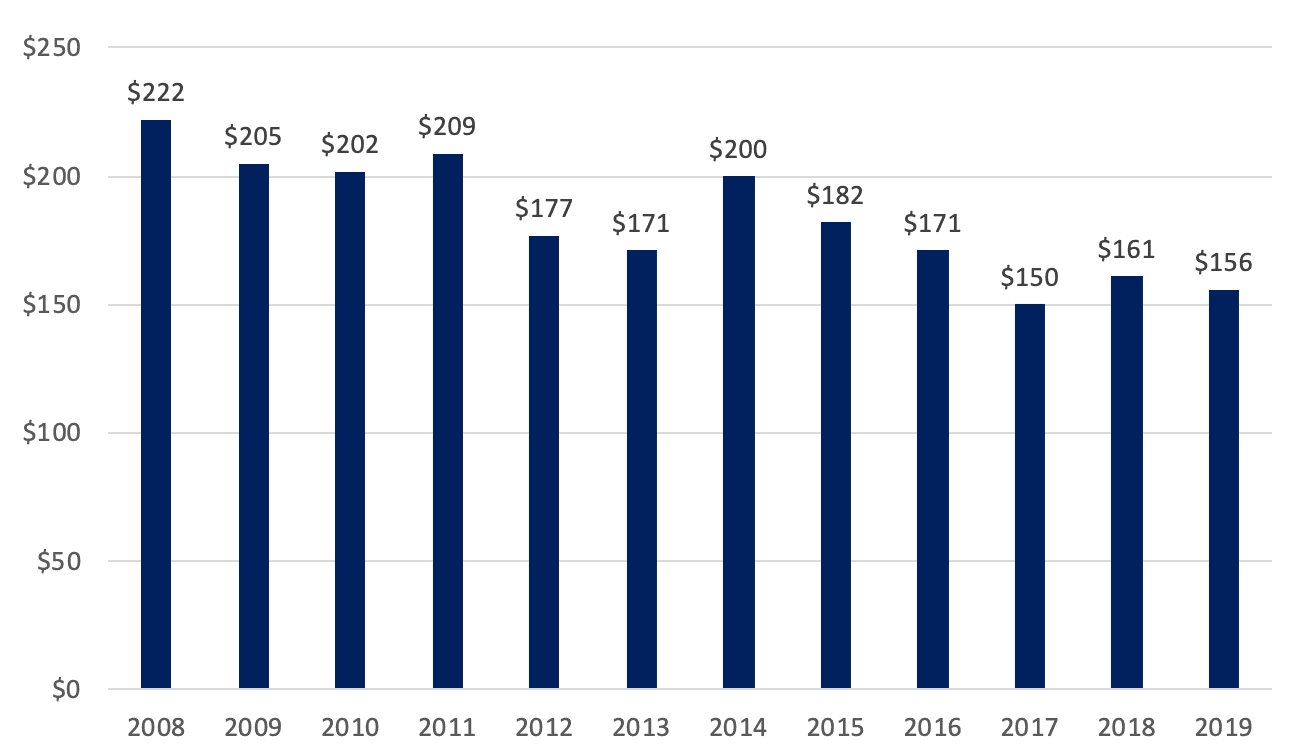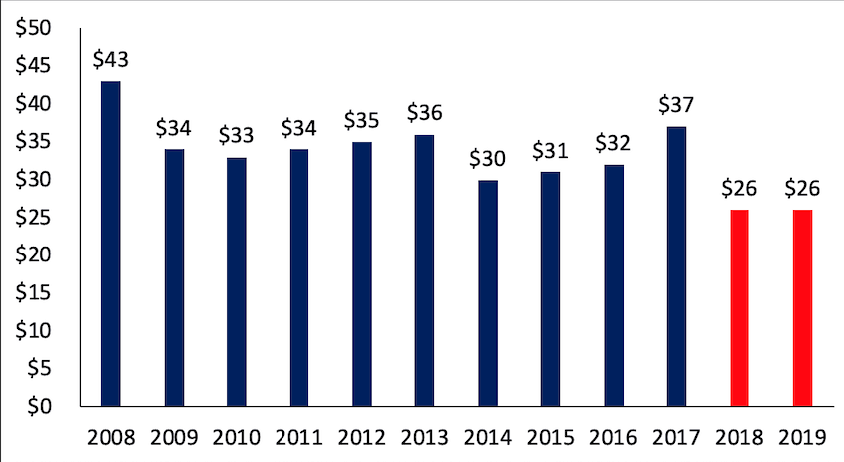
Last week, the American Diabetes Association (ADA) released its 2019 audited financial statements. This is the eighth year the JDCA has reviewed the ADA’s financial documents and little has changed in that time period. The ADA spends only a small portion of its annual budget to fund research grants (17%) and an even smaller amount on research that is specifically focused on T1D (2.4%).
The majority of the ADA’s resources are not used to fund research but are instead directed to publishing, advocacy, fundraising, salaries, and overhead. Much of this activity, as well as the majority of its research grant funding, is focused on T2D. Still, the ADA markets itself as though it equally represents all people with diabetes. Based on how it allocates its research resources, the ADA is predominantly a T2D organization.
Summary Points
- The ADA's 2019 annual income was $156m, down from $161m in 2018. Income has been declining steadily for the past decade. See Appendix A.
- The ADA spent $26m funding research grants in 2019, matching a 10-year low, as illustrated in Appendix B.
- 10% of the ADA's income was dedicated entirely to T2D in 2019, 5% was used for research applicable to all people with diabetes, and 2% was spent on T1D-specific research. Said differently, just $4m of the ADA's $156m revenue made it to T1D researchers in 2019.
- The ADA has never been a major funder of T1D research. Over the last five years, the organization has not spent more than $6m on T1D research grants in a single year.
Message for the T1D Community
Today, the ADA is not the choice for donors seeking to support a T1D cure. However, should the organization choose to adjust its priorities and focus more on T1D, its access in Washington and its research centers around the world could be harassed to make a real difference for people with T1D.
Appendix A: ADA Annual Revenue Since 2008 (in millions)

Appendix B: ADA Total Annual Spending on Research Grants (in Millions)

